Fruits that start with E: A comprehensive list of all fruits beginning with the letter E for all your culinary needs! Whether you want to try out some new fruits or enhance your trivia skills, this list is for you! You'll love learning more about these tasty fruits, from common fruits like elderberry to unique items like eggfruit!
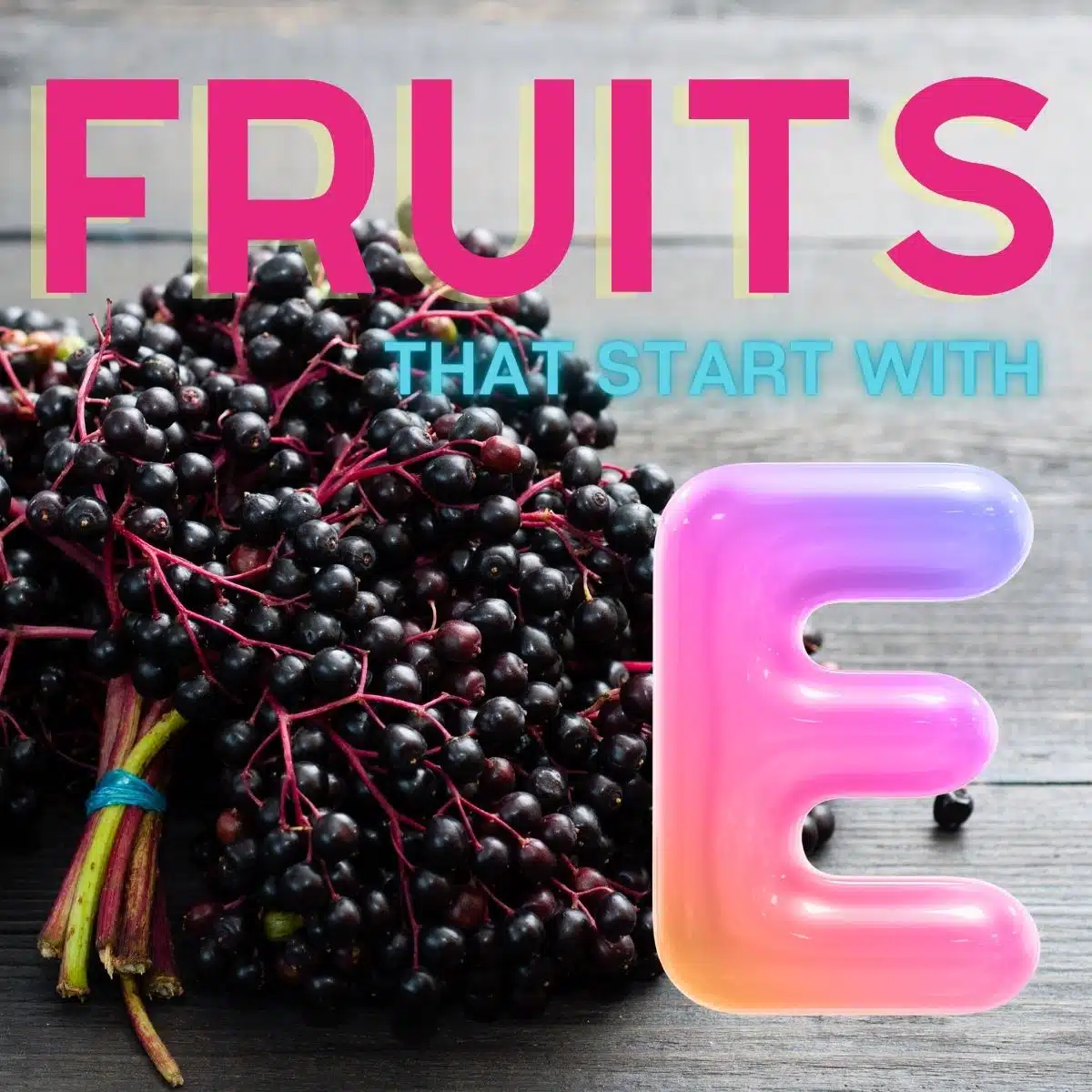
Jump to:
- 42 Fruits Starting With The Letter E
- 1. Eady's Magnum Apples
- 2. Earl Cowper Apples
- 3. Early Girl Tomato
- 4. Earlygold Mango
- 5. Early Harvest Apples
- 6. Earth Fig
- 7. Easter Beurré Pear
- 8. Eastern May Hawthorn
- 9. Edward Mango
- 10. Eggfruit
- 11. Eggplant
- 12. Eglantine Fruit
- 13. Egri Körte Pear
- 14. Egusi
- 15. Elaeocarpus Fruit
- 16. Elands Sour Fig
- 17. Elderberry
- 18. El Dorado Pear
- 19. Elephant Apple
- 20. Eletta Morettini Pear
- 21. Emblica
- 22. Émile d'Heyst Pear
- 23. Emu Apple
- 24. Enfant Nantais Pear
- 25. English Bergamot Pear
- 26. English Caillot Rosat Pear
- 27. Ensete
- 28. Entawak
- 29. Enterprise Apple
- 30. Ephedra
- 31. Épine du Mas Pear
- 32. Espiki Pear
- 33. Etrog
- 34. Eva Baltet Pear
- 35. Evergreen Huckleberry
- 36. Eugenia Fruit
- 37. European Cornel
- 38. European Crabapple
- 39. Euterpe Fruit
- 40. Ewart Pear
- 41. Excoecaria Fruit
- 42. Eyewood Pear
- Best Fruits That Start With E
- 📖 Recipe Card
- Fruits That Start With E: Pasta Alla Norma (+More Tasty Fruits!)
- 💬 Comments & Reviews
42 Fruits Starting With The Letter E
After I finished up my alphabet challenges, I just had to keep going! So I began doing the challenge but for fruit specifically, and I'm having so much fun!
Who knew there were so many different fruits beginning with the same letter? There are so many new ones that I can't wait to try out!
1. Eady's Magnum Apples
Eady's Magnum is a classic New Zealand apple variety first introduced in the late 19th century. This apple was developed by Charles Eady, a New Zealand fruit grower, and gained popularity for its large size and distinct flavor!
The apple's flesh is firm, crisp, and moderately juicy, offering a well-balanced sweet-tart flavor with subtle hints of spice. Eady's Magnum is primarily considered a dessert apple, best enjoyed fresh out of hand.
However, its firm texture makes it an excellent choice for baking, cooking, and making applesauce.
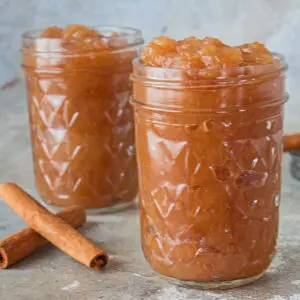
2. Earl Cowper Apples
Earl Cowper apple, also known as Cowper's Pippin, is a traditional English apple cultivar originating in the 19th century. It is believed to have been named after Earl Cowper, a British nobleman and politician.
This apple is medium-sized, with predominantly green skin flushed with red streaks or patches. Its flesh is white, firm, and moderately juicy, offering a sharp, tangy, and aromatic flavor profile.
It is primarily considered a dessert apple, ideal for fresh eating, but it can also be used in various culinary applications such as baking and cooking. Its firm texture holds up well when cooked in pies, tarts, and crumble recipes.

3. Early Girl Tomato
Early Girl is a popular and versatile tomato cultivar that is valued for its early harvest and exceptional taste. Developed by the PetoSeed Company in the early '70s and then marketed by the Burpee Seed Company, this variety has gained popularity in markets with short growing seasons.
It is a medium-sized tomato with a round to slightly oblong shape and smooth red skin when ripe. The flesh is firm, juicy, and meaty, offering a sweet and tangy flavor with a slightly acidic aftertaste.
They are primarily used in salads, sandwiches, and other dishes. Additionally, early girl tomatoes are suitable for roasting, grilling, or use in sauces, salsa, and soup.
As a bonus, they are known for their early-season harvest, making them a popular choice for gardeners who want to enjoy homegrown tomatoes earlier in the season!
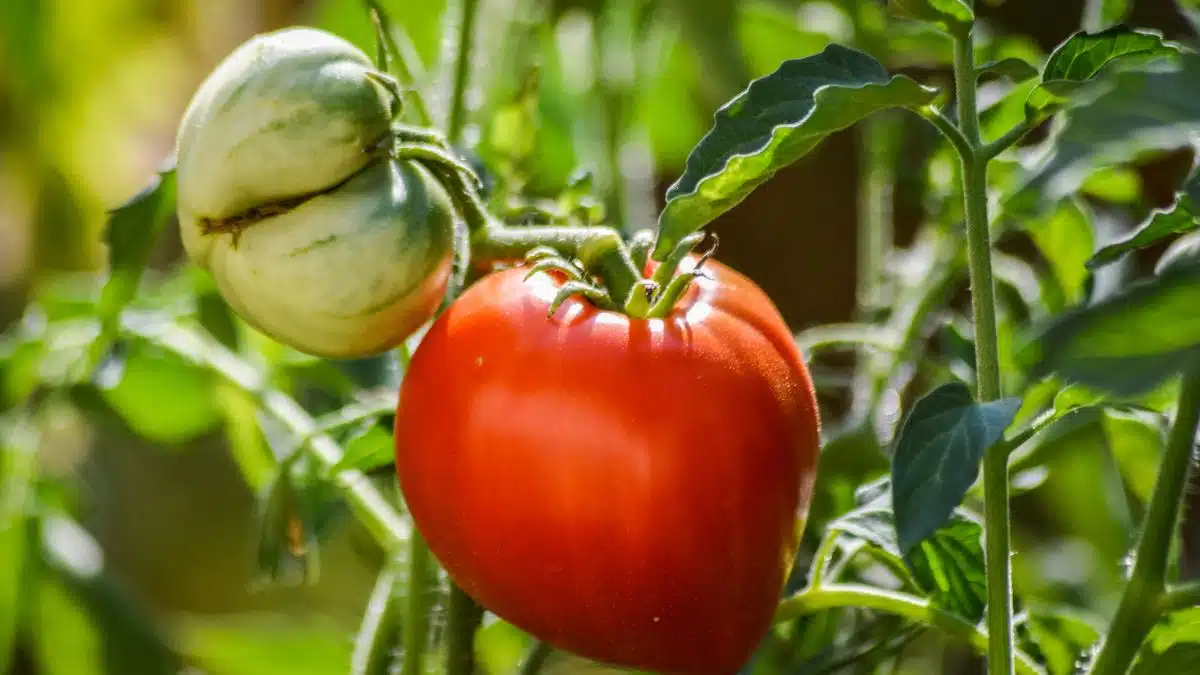
4. Earlygold Mango
The Earlygold mango is medium-sized, with an oval to oblong shape and a slightly curved, flattened side. Its skin is smooth and thin, featuring a greenish-yellow hue that develops a beautiful golden color when the fruit is ripe.
The mango's flesh is fiberless, deep orange, and juicy, offering a sweet and mildly tangy flavor with hints of citrus and peach. They are primarily enjoyed fresh out of hand or used in fruit salads, smoothies, and desserts.
Additionally, they can be incorporated into various dishes and recipes, such as salsas, chutneys, and marinades.
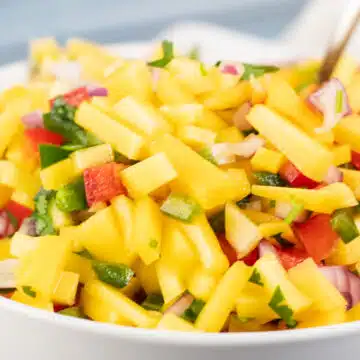
5. Early Harvest Apples
Early-harvest apples, as the name suggests, are a group of apple varieties that ripen and are ready for harvest earlier in the season than other apple varieties. These apples typically mature during summer, providing fresh fruit when many other apple types are unavailable.
Early harvest apples include varieties such as Lodi, Gravenstein, Zestar, and Transparent, each with its unique flavor profile and appearance. They are known for their fresh and often tart taste, making them ideal for cooking and baking.

6. Earth Fig
Earth fig is a small, round fruit native to Southern Africa. The fruit is usually red when ripe, and has a wonderfully sweet flavor!
Earth figs are not as widely known or cultivated as other fig varieties, such as the common fig, but they still hold significance in their native regions. They can be eaten either fresh or dried.
7. Easter Beurré Pear
This classic pear variety is highly regarded for its late ripening, which allows the fruit to be stored and enjoyed during winter when many other pear varieties are unavailable.
They are medium to large, slightly irregular in shape, and elongated. The skin is greenish-yellow, often with russet patches or netting, and may develop a slight red blush on the side exposed to sunlight.
The pear's flesh is white, fine-grained, and buttery, offering a sweet and aromatic flavor with a hint of spice. Easter Beurré pears are best suited for eating when fresh, but they can also be cooked using different methods, such as poaching or baking.

8. Eastern May Hawthorn
Eastern May Hawthorn, also known as Mayhaw, is a small, red fruit native to the southeastern United States. It grows on a deciduous shrub or small tree that is part of the Rosaceae family.
The hawthorn fruit has a tart, tangy flavor and is typically harvested in the late spring, hence the name "Mayhaw." The fruit can be used to make wine and other beverages.
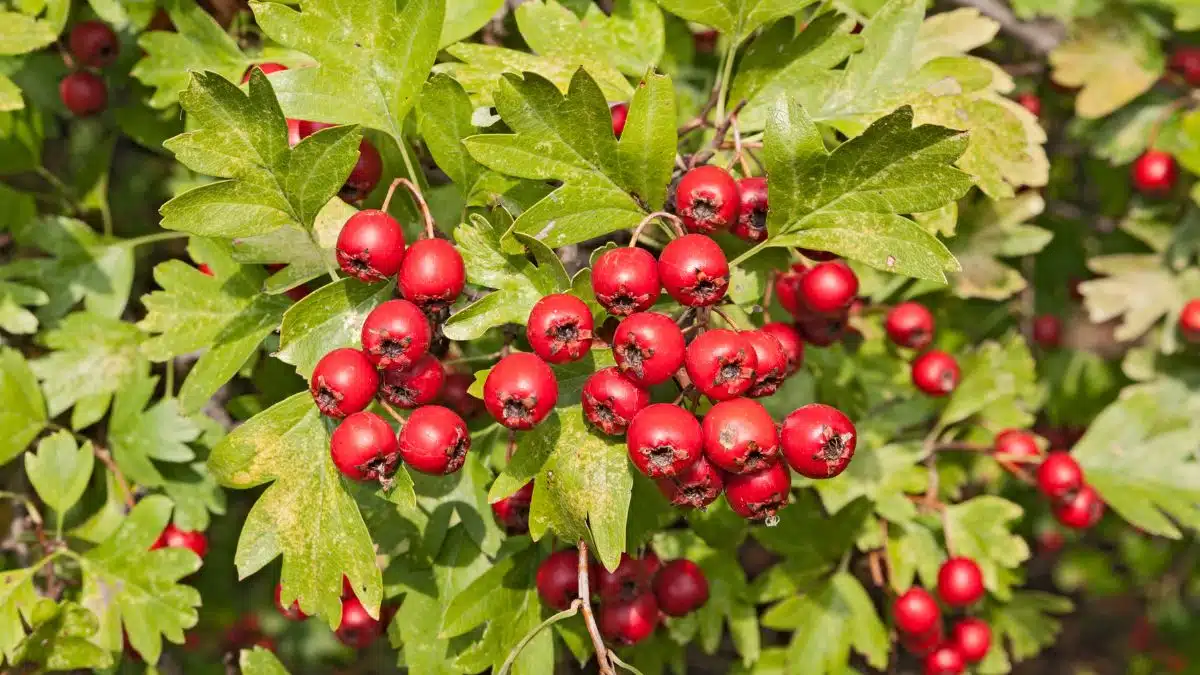
9. Edward Mango
Edward mango is a unique and delicious variety of mango originating in Florida.
It is medium to large, with an oval to oblong shape and a slightly curved, flattened side. The skin is smooth and thin, featuring a greenish-yellow hue that develops a beautiful orange-red blush when the fruit is ripe.
The mango's flesh is fiberless, deep orange, and juicy, offering a rich, sweet, mildly tangy flavor with hints of tropical fruit. Edward mangoes are primarily enjoyed fresh out of hand or used in fruit salads, smoothies, and desserts.
Additionally, they can be incorporated into many tasty dishes, such as salsas, chutneys, and marinades.

10. Eggfruit
Eggfruit, also known as canistel or yellow sapote, is a tropical fruit native to Mexico and Central America. The fruit has a unique egg-like shape and a bright yellow, leathery skin.
Its sweet, custard-like flesh has a texture similar to that of cooked egg yolk, hence its name. The flavor of eggfruit is often compared to a mix of pumpkin, sweet potato, and caramel.
Eggfruit is typically eaten raw but can also be used in smoothies, ice cream, and various desserts. Due to its distinctive taste and texture, eggfruit is a delicacy in many tropical regions.
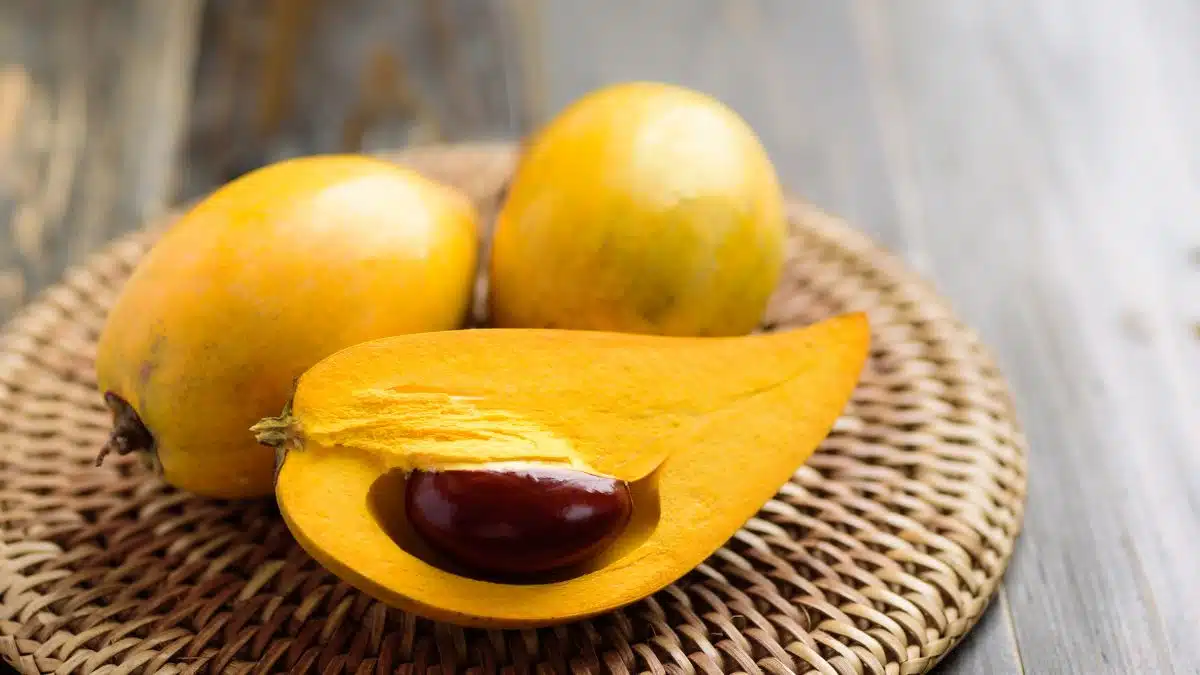
11. Eggplant
Eggplant, also known as aubergine, grows in various shapes, sizes, and colors on a bushy, perennial plant. The most common variety is the large, deep purple, oblong-shaped fruit, but eggplant can also be found in white, green, and striped varieties.
While it is a fruit, you will most commonly find it cooked and prepared as a vegetable. Its mildly bitter flavor and sponge-like consistency make it an excellent ingredient in many dishes, from appetizers to main courses.
Eggplant is popular in Mediterranean, Middle Eastern, and Asian cuisines, often grilled, roasted, sautéed, or incorporated into stews and curries. Some well-known eggplant dishes include Italian Eggplant Parmesan, French Ratatouille, and Middle Eastern Baba Ghanoush.

12. Eglantine Fruit
Eglantine fruit is a wild fruit that grows on the wild rose shrub native to Europe, Asia, and North Africa. It is small and round, with a red or orange hue when ripe, and is particularly enjoyed for its refreshing taste and fragrant aroma.
Eglantine fruit is versatile and can be used in many different ways! It is primarily used to make jams, jellies, and preserves, as well as in teas and other beverages. The fruit can also be used to make syrups, sauces, and liquors, adding a unique and fragrant twist to the flavor.
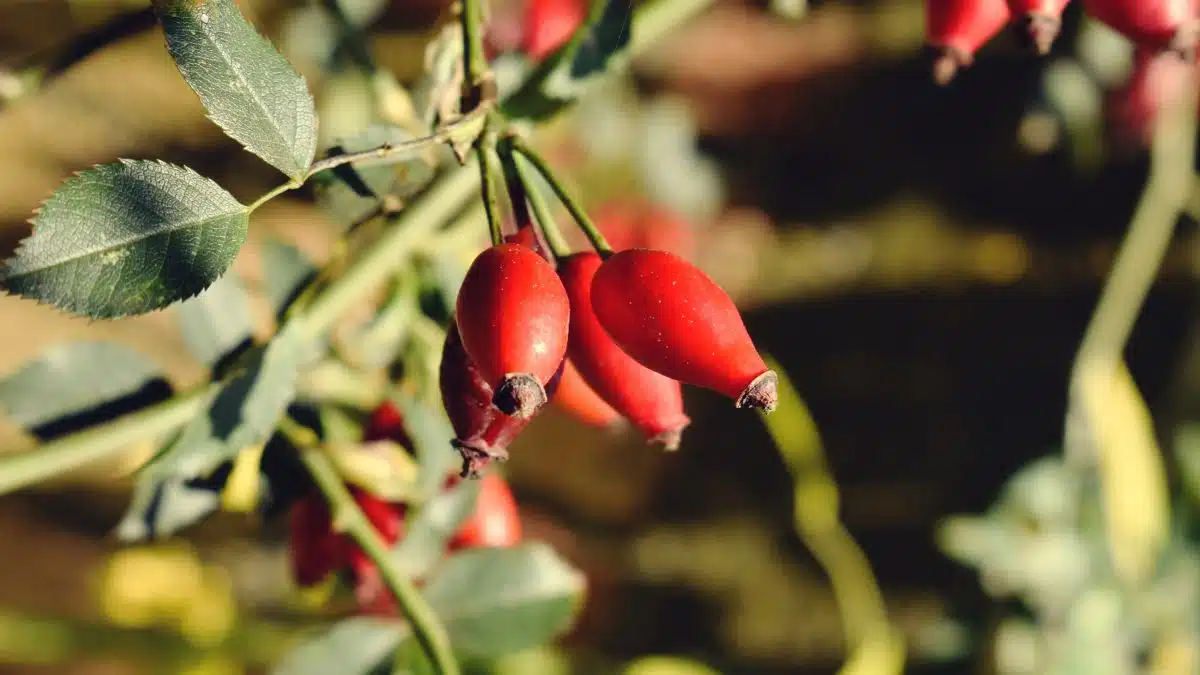
13. Egri Körte Pear
Egri Körte, also known as Eger Pear, is a traditional Hungarian pear from Hungary's Eger region. It is medium-sized with an elongated, conical shape and a somewhat irregular surface.
The pear's flesh is white, fine-grained, and moderately juicy, offering a pleasantly sweet and mildly tart flavor profile. Egri Körte pears are primarily considered a dessert pear, best enjoyed fresh. However, they can also be used in cooking, baking, and preserving.

14. Egusi
Egusi, or melon seed, is a fruit primarily found in West and Central Africa. The fruit belongs to the cucurbit family and has a hard outer shell that encloses small, white seeds.
Egusi seeds are often used to make a popular soup in West and Central Africa. The seeds are ground into a paste and then added to the soup, thickening the broth and adding a rich, nutty flavor.
In addition to soup, egusi seeds are also used as an ingredient in other dishes, such as stews, sauces, and cakes. The seeds can also be roasted and eaten as a snack.

15. Elaeocarpus Fruit
Elaeocarpus fruits are typically small, oval, or round and have a fleshy outer layer surrounding a hard, stone-like seed. The taste of these fruits can vary, with some being sweet and others tart.
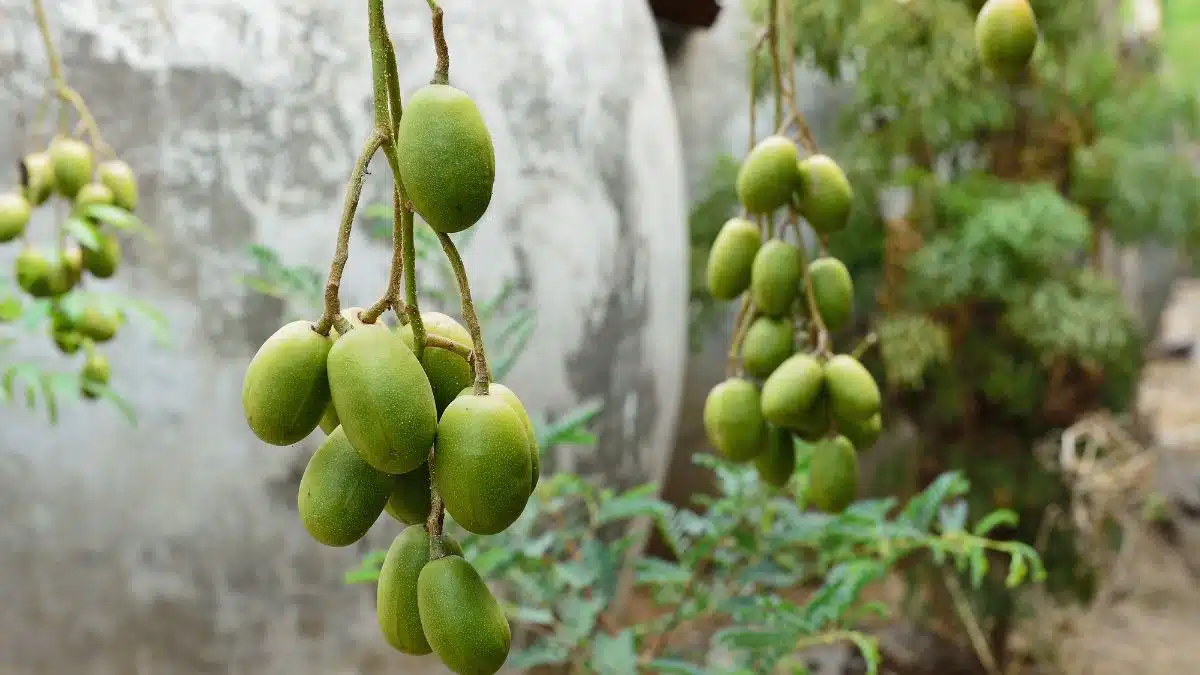
16. Elands Sour Fig
The elands sour fig fruit is small and round, with a somewhat conical shape and a tough outer skin. Its skin is greenish-yellow which becomes more vibrant as the fruit ripens.
The interior flesh of the fruit is gelatinous, juicy, and tangy, offering a sour and slightly sweet flavor profile. Elands sour fig fruits are primarily enjoyed fresh as a snack, but they can also be used to make dishes such as jams, jellies, and chutneys.
17. Elderberry
Elderberry is a small, dark purple berry that grows in clusters on the elder tree (Sambucus), native to Europe, North America, and Western Asia. Elderberries have a tart, slightly sweet flavor and are not typically consumed raw due to their mildly toxic compounds.
They are popular for making jams, jellies, syrups, wines, and teas.
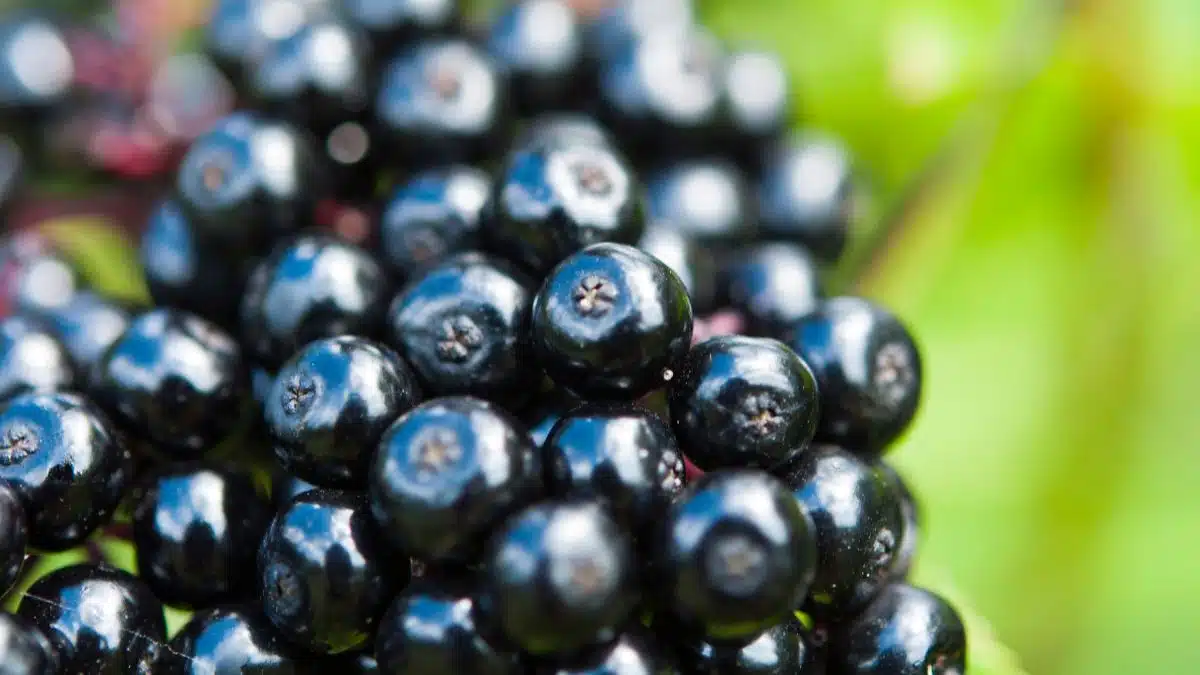
18. El Dorado Pear
El Dorado pear is a rare and unique pear cultivar believed to have originated in the United States during the mid-20th century.
The pear's flesh is creamy-white, fine-grained, and tender, providing a sweet and aromatic flavor with subtle hints of spice. El Dorado pears are primarily considered a dessert pear and are best enjoyed fresh or added to salads and other dishes.

19. Elephant Apple
The elephant apple is a large, green fruit native to Southeast Asia, particularly India, Bangladesh, and Nepal. They have a hard, protective outer shell and a fibrous, juicy interior with a sour and slightly astringent taste.
Due to its strong acidity, elephant apple is not commonly consumed raw. Instead, it is an ingredient in various regional dishes, including pickles, chutneys, curries, and preserves.
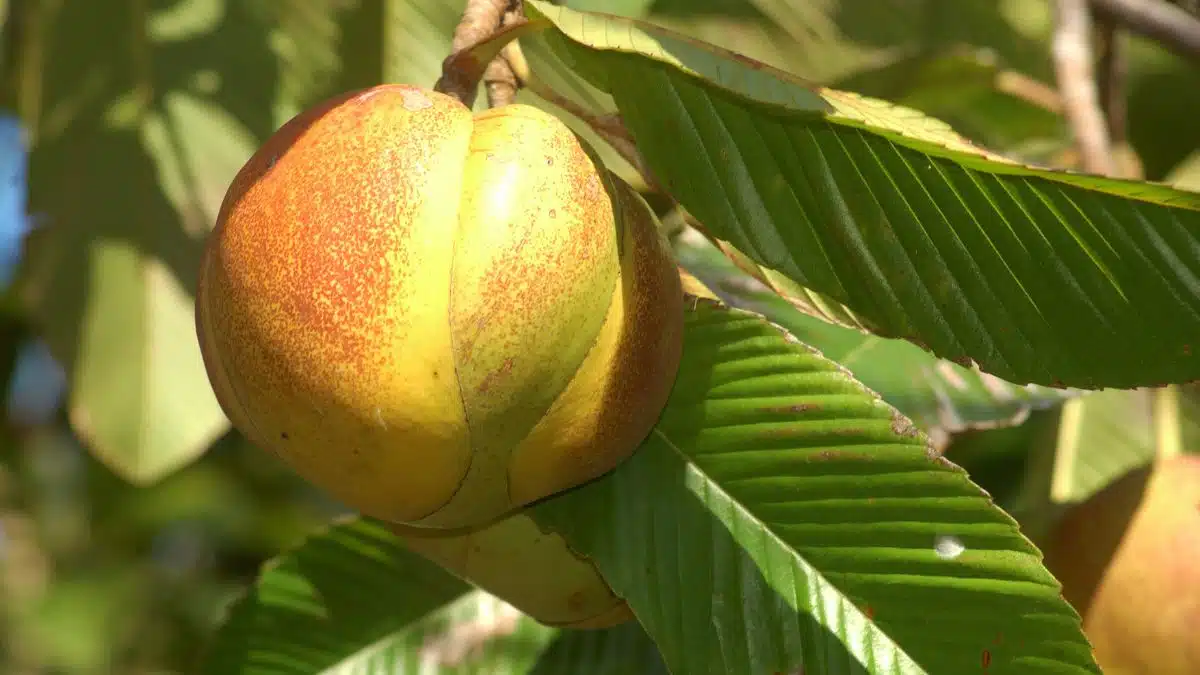
20. Eletta Morettini Pear
Eletta Morettini is an Italian variety of pear that originated in the Tuscany region during the 20th century.
It is medium-sized, with a classic pyriform shape and a slightly irregular surface. The skin is smooth and thin, featuring a greenish-yellow color.
The pear's flesh is creamy-white, fine-grained, and juicy, offering a sweet and slightly tangy flavor with delicate floral undertones. They are most commonly enjoyed raw as a snack or used in salads or on cheese plates.
>>>>See all of my recipes here<<<<
21. Emblica
Emblica, also known as Indian gooseberry, is a small, green, round fruit native to India and other parts of South Asia. The fruit has a sour, bitter, and astringent taste.
In Indian cuisine, Emblica is often used as an ingredient in pickles, chutneys, and refreshing drinks. It can also be dried as a souring agent in various dishes.
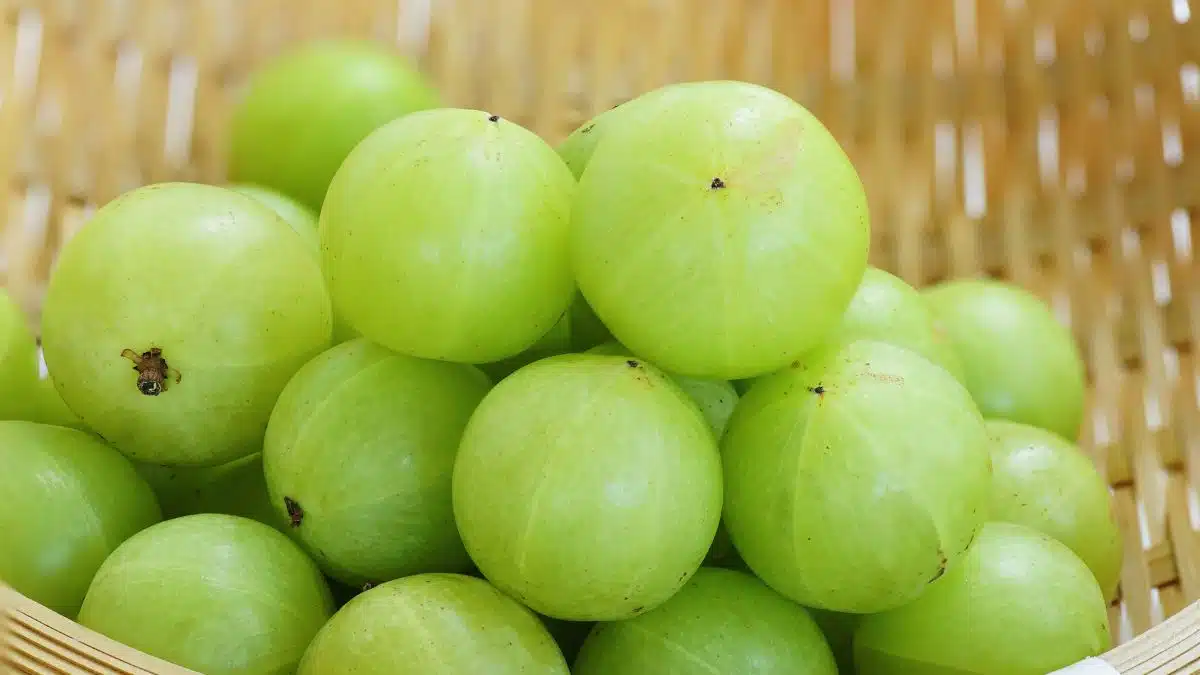
22. Émile d'Heyst Pear
The Émile d'Heyst pear is a Belgian pear variety that is medium-sized. The skin is greenish-yellow in color, and the flesh is nice and juicy.
It has a sweet and mildly tangy flavor with subtle hints of spice. They are typically eaten raw, in salads, or used in baking or preserving.
23. Emu Apple
Emu Apple, also known as Quandong or native peach, is a small, bright red fruit native to Australia.
They have a tart, tangy flavor with a hint of sweetness and a slightly bitter aftertaste. The fruits are often used in jams, preserves, chutneys, and sauces.
24. Enfant Nantais Pear
This variety of pear is juicy and slightly tangy in flavor. Enfant Nantais pears are enjoyed fresh, used in baking, poached, or preserved.
25. English Bergamot Pear
The English Bergamot pear is medium-sized, with a distinctively flattened, round shape that sets it apart from other pear varieties.
These pears are great for baking, poaching, or enjoying raw!
26. English Caillot Rosat Pear
This variety of pear is buttery with a sweet and slightly tangy flavor. They can be eaten raw or used in cooking or baking.
27. Ensete
Ensete, also known as Ethiopian banana or false banana, is a plant native to Ethiopia and other parts of East Africa. Although the plant is called a banana, it is not closely related to actual bananas.
Ensete fruit is a staple food in Ethiopia, known as "kocho." The fruit is harvested when the plant is mature and is typically prepared by fermenting the pulp, which is then dried and stored for future use.
The fermented pulp is often cooked and served as a flatbread or porridge and is a significant source of carbohydrates and dietary fiber in the Ethiopian diet.
28. Entawak
Entawak is a tropical fruit native to Southeast Asia, particularly Borneo, Sumatra, and the Malay Peninsula. Depending on the region, this rare and unique fruit is known as Bintawa, Nyatoh, or Baniti.
It is known for its unique aroma, often compared to durian or jackfruit. Entawak has a sweet, slightly acidic taste and a creamy and somewhat fibrous texture. It is often eaten fresh but is also used to make tasty jams, jellies, and other preserves.
29. Enterprise Apple
The Enterprise apple is a cross between the McIntosh and Golden Delicious varieties. It is medium to large and features a deep red skin with hints of yellow or green. The fruit is firm, crisp, and juicy, with a mildly tart and aromatic flavor profile.
This apple variety is highly valued for its versatility in fresh eating and culinary applications. It is excellent for eating out of hand but also holds its shape well when cooked or baked, making it suitable for various recipes, such as pies, crisps, and sauces.
Additionally, it is known for its good storage qualities, maintaining its texture and flavor for several months when stored properly, allowing for extended enjoyment throughout the winter months.

30. Ephedra
The ephedra fruit, also known as ephedra berry, is small, round, and fleshy, with a bright red or orange color when ripe. Each fruit typically encloses a single seed, surrounded by a fleshy and sweet-tasting aril.
Ephedra fruits are primarily enjoyed by wildlife, such as birds and small mammals, who feed on the fruit and disperse the seeds. Though humans do not commonly consume ephedra fruits, they can be used as a natural sweetener in small quantities due to the sweetness of the aril.
31. Épine du Mas Pear
Épine du Mas pears are a sweet and tangy dessert pear, best enjoyed fresh out of hand or incorporated into fruit salads and cheese plates.
They can also be used in various culinary applications, such as baking, poaching, and preserving.
32. Espiki Pear
Espiki pears are a French pear variety that is enjoyed raw and used in cooking and baking. Enjoy it fresh in a salad, or bake it into a tart or a pie!
33. Etrog
Etrog is a citrus fruit native to the Middle East and parts of the Mediterranean region. It is a specific variety of citron, one of the oldest known citrus fruits. It is particularly significant in Jewish culture and religious practice, as it is one of the Four Species used during the Jewish festival of Sukkot.
The Etrog fruit is known for its distinct, sweet, and floral aroma. Etrog has a thick rind and very little pulp or juice, making it less suitable for consumption than other citrus fruits.
Its primary use is in religious rituals, but it can also be used to make preserves, liqueurs, or as a flavoring agent. The rind is sometimes candied or used in perfumes and cosmetics for its fragrance.
34. Eva Baltet Pear
Eva baltet pears are a French type of pear that can be enjoyed raw or used in cooking and baking.
35. Evergreen Huckleberry
When ripe, the evergreen huckleberry fruit is small, round, and dark purple to black. These berries have a sweet and slightly tart flavor.
Evergreen huckleberries can be eaten fresh out of hand or used in various recipes, such as pies, cobblers, jams, jellies, and sauces. Additionally, they can be incorporated into baked goods, like muffins and pancakes, adding flavor and color.
36. Eugenia Fruit
Eugenia is a genus of tropical and subtropical fruit-bearing trees and shrubs belonging to the Myrtaceae family. It comprises more than 1,000 species, many of which are native to the Americas.
Some well-known fruits within the Eugenia genus include the Surinam cherry, the Brazilian cherry, and the grumichama.
These fruits are generally small and fleshy, often with a thin skin and a juicy, sweet, or tart flavor, depending on the species. The fruits come in various shapes and colors, such as red, purple, or black, and may resemble cherries or berries. The flesh is typically encased around one or more seeds.
These fruits are commonly eaten fresh and can be used in various culinary preparations, including jams, jellies, preserves, and beverages.
37. European Cornel
The European Cornel produces small, bright red, cherry-like, oval-shaped fruits. When ripe, it has shiny, deep red skin and a tart, slightly astringent taste.
The flesh surrounds a single, large, oblong seed. Due to their tartness, the fruits are not typically eaten fresh but are used in various culinary preparations, such as jams, jellies, syrups, sauces, and liqueurs.
They can also be dried and used in baked goods or snacks.
38. European Crabapple
European Crabapple, also known as Wild Crabapple or Forest Crabapple, is a deciduous tree belonging to the Rosaceae family. It is native to Europe and Western Asia and is commonly found in woodland areas, hedgerows, and scrublands.
It produces small, rounded fruits that have green or yellowish skin that often turns red or orange when ripe. The fruit's flesh is firm, with a tart and astringent taste due to its high levels of malic acid. Due to their sour taste, European Crabapples are not typically eaten fresh.
However, they are widely used in culinary preparations such as jams, jellies, sauces, chutneys, and ciders. The fruit's high pectin content makes it exceptionally suitable for jellies and preserves, while its acidity adds a tangy flavor to various dishes.
39. Euterpe Fruit
Euterpe fruit, commonly known as Açaí berry, is a small, dark purple fruit native to Central and South America. The fruit is produced by the Açaí palm, a tall and slender palm tree that thrives in both swampy areas and floodplains.
The Euterpe fruit is about 1-2 centimeters in diameter and has a round shape, resembling a grape. It consists of thin, edible skin surrounding a large seed with a minimal amount of pulp. Traditionally, this fruit has been a dietary staple for indigenous people in the Amazon region.
The Açaí berry is often used in the preparation of various food and beverage items, such as smoothies, juices, ice creams, and traditional Brazilian dishes. Its unique taste is often described as a mix of both berries and chocolate with a slightly earthy undertone.
40. Ewart Pear
Ewart is a pear cultivar that originated in the United States during the early 20th century. Named after its developer, Professor John Ewart, this variety has gained popularity for its unique appearance and exceptional taste.
It is juicy and slightly sweet. Most commonly, this pear is enjoyed raw, in salads, or used in baking.
41. Excoecaria Fruit
Excoecaria fruit is produced by trees and shrubs belonging to the Excoecaria genus within the Euphorbiaceae family, which consists of over 40 species.
The Excoecaria fruit is typically small and rounded and occurs in clusters. Its color and appearance may vary depending on the species, with some fruits presenting a smooth or even slightly wrinkled surface. They are generally not widely consumed due to the toxic nature of some Excoecaria species.
42. Eyewood Pear
Eyewood is a traditional British pear cultivar from the 19th century. This heritage variety is appreciated for its unique appearance and delightful taste.
Additionally, they can be utilized in various culinary applications, such as baking, poaching, and preserving.
Best Fruits That Start With E
So many different fruits begin with the letter E! While I have not tried all of them, I am a huge fan of eggplant, Euterpe fruit (acai berries), and many different varieties of pears!
Which fruit do you want to try first? Or which ones have you already tried out? Leave a comment down below and let me know your thoughts!
Do you love a recipe you tried? Please leave a 5-star 🌟rating in the recipe card below and/or a review in the comments section further down the page.
Stay in touch with me through social media @ Pinterest, Facebook, Instagram, or Twitter! Subscribe to the newsletter today (no spam, I promise)! Don't forget to tag me when you try one of my recipes!
📖 Recipe Card
Fruits That Start With E: Pasta Alla Norma (+More Tasty Fruits!)
Ingredients
- 1 lb pasta (such as penne or spaghetti)
- 3 tablespoon olive oil (extra virgin)
- 1 large eggplant (peeled and cut into ½-inch cubes)
- 1 small onion (chopped)
- 2 teaspoon minced garlic
- ¼ teaspoon each, salt & pepper (to taste)
- 1 teaspoon dried oregano
- ¼ teaspoon crushed red pepper flakes (optional)
- 28 oz crushed tomatoes (1 28-ounce can)
- 2 tablespoon tomato paste
- ½ cup ricotta cheese
- fresh basil leaves (chopped)
(Note: 2x or 3x only changes the ingredient list)
Instructions
- Cook the pasta according to the package directions until al dente.
- Meanwhile, heat the olive oil in a large skillet over medium-high heat. Add the eggplant and cook until golden brown and tender, stirring occasionally for about 10-15 minutes.
- Add the onion and garlic to the skillet and cook until softened, about 5 minutes.
- Pour the crushed tomatoes into the skillet and bring to a simmer. Season with salt, pepper, dried oregano, and crushed red pepper, if using. Cook for about 10-15 minutes, stirring occasionally.
- Drain the pasta and add it to the skillet with the crushed tomatoes and tomato paste. Toss to combine.
- Divide the pasta among serving plates. Sprinkle with the grated ricotta cheese and chopped basil.
- Serve immediately and enjoy!
Notes
- You can substitute the ricotta cheese with other grated cheeses, such as pecorino romano or Parmesan.
- If you want to make this dish vegetarian or vegan, you can omit the cheese or use a vegan cheese alternative.
- You can add a pinch of red pepper flakes or chili flakes for some extra heat if desired.
- To store: Place your leftover pasta in an airtight container in the fridge and eat it within 3 days. Although this dish is best enjoyed fresh, you can freeze the sauce in a freezer-safe container for up to 2-3 months.
- To reheat: Warm your leftovers over medium heat in a saucepan on the stovetop or in the microwave in 30-second increments.



Comments
No Comments